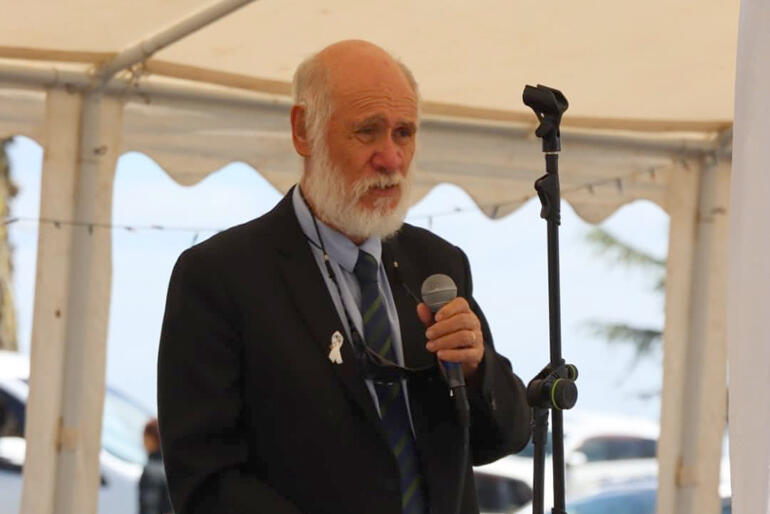
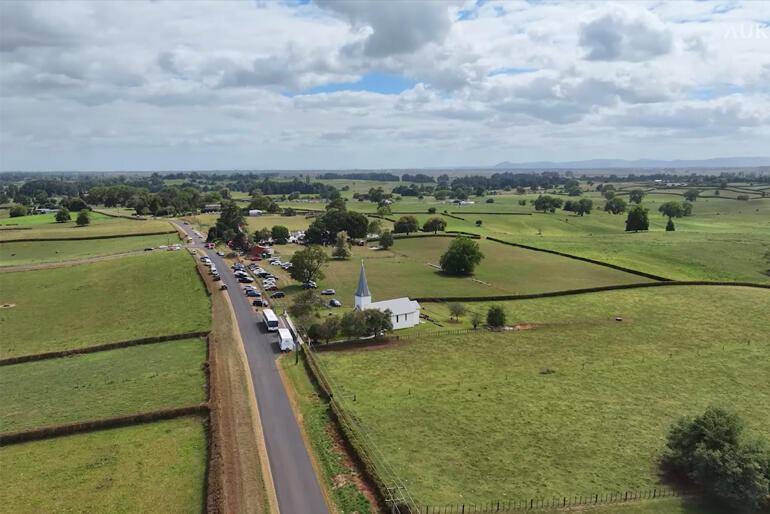
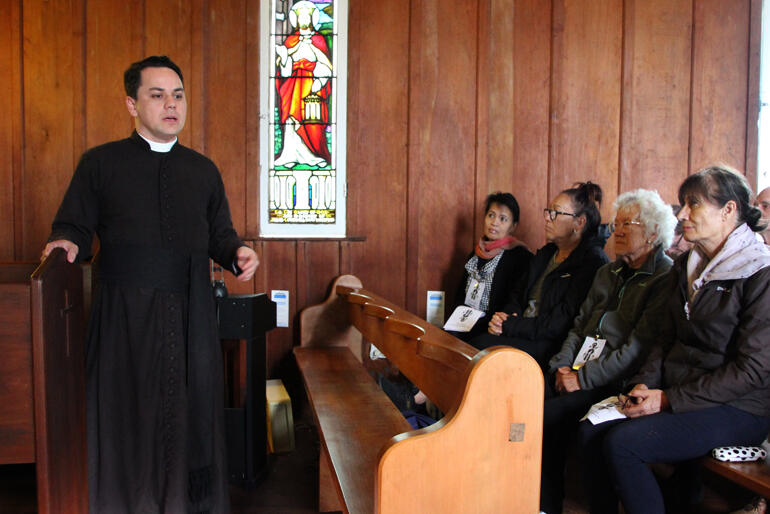
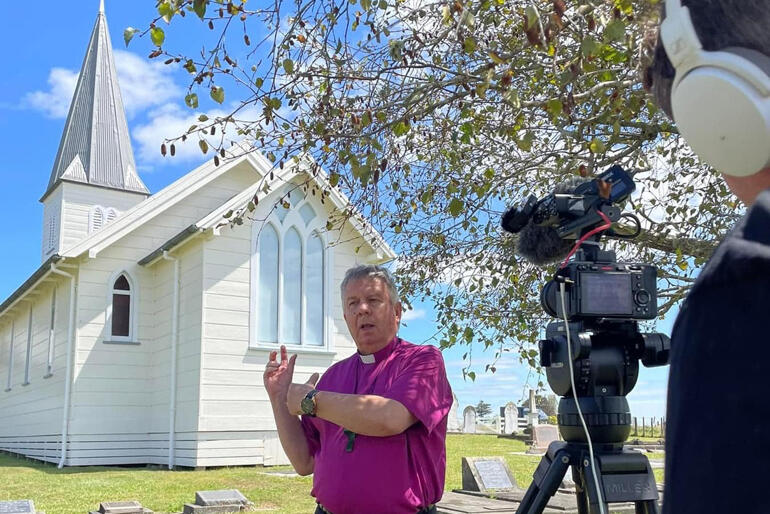
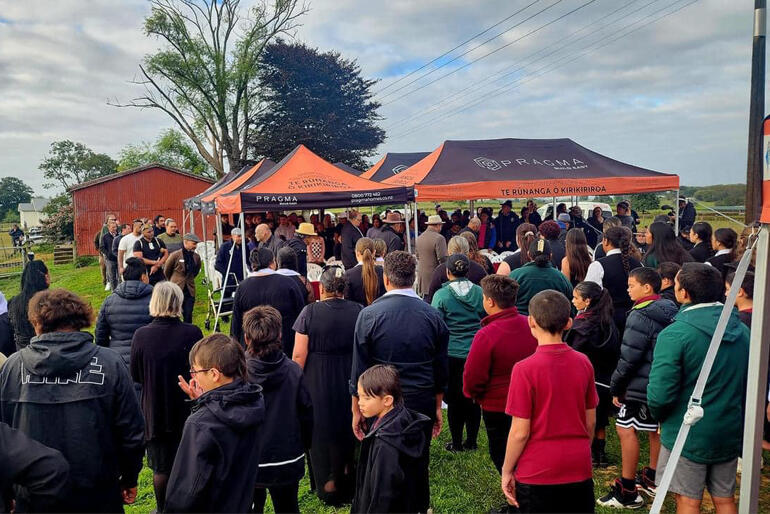
Anglicans were counted among the 700+ people who gathered at Rangiaowhia near Te Awamutu on 21 February this year to commemorate the 160th anniversary of one of the worst attacks on Māori non-combatants in the New Zealand land wars.
The tragedy remembered this February took place at Rangiaowhia on Sunday 21 February 1864, when a large number of Māori women, children and kaumatua were massacred by colonial forces while in their church.
After British forces fired hundreds of rounds into the raupo church, the church burnt to the ground with the people still inside. The attack itself was part of a broader military and Government strategy to halt the Kingitanga movement’s opposition to widespread Pākehā land seizures and corrupt land deals.
The result of the massacre for mana whenua Ngāti Apakura and Ngāti Hinetū was not only the destruction of entire families in one day, but it dispersed remaining hapu members far and wide and ended an era of economic and social cooperation that had grown at Rangiaowhia between mana whenua and the Roman Catholic and Anglican missions.
While the Church was not responsible for the atrocities, the military’s betrayal of the church as a sanctuary, and Bishop George Selwyn’s failure to prevent the killing through negotiation, had left some descendants of Rangiaowhia with deep mistrust of the church.
The February 21st commemoration hosted by Ngāti Apakura and Ngāti Hinetu, began with prayers at the kohatu memorial at dawn, offered by both Paimarire and Mihinare (Anglican) spiritual leaders.
Rev Cruz Karauti-Fox, who is descended from survivors of the massacre at Rangiaowhia, took part in the 160th commemorations,
“In the midst of their mourning, there was much joy and celebration as mihi were offered, whakapapa retold, and tikanga once again prevailed upon the land of Rangiaowhia. For many it was a homecoming, a connection with whanau."
Archbishop David Moxon represented Bishop Ngarahu Katene and Bishop Philip Richardson at the occasion, which took place on land newly reacquired by mana whenua, which they had procured with the help of Te Haahi Mihinare.
The land purchase of 4.7 hectares for the iwi saw the Diocese of Waikato and Taranaki working in partnership with Te Hui Amorangi o te Manawa o Te Wheke to make a large contribution, with support from the Dioceses of Auckland and Wellington.
“This purchase came from a desire to begin to offer partnership in support of restorative justice for the iwi and to offer a new Māori mission based on the inaugural groundbreaking work done by Pā Cruz Karauti Fox,” said Archbishop David, who wants to build on positive relations between iwi and church.
“The Haahi had been an active partner with the iwi from 1838, with many years of mutual prosperity.”
During the 1840s-50s Roman Catholic and Anglican missions had worked alongside one another with iwi in thriving Rangiaowhia, where the vast gardens and orchards of Ngāti Apakura and Ngāti Hinetu had fed not only the large Rangiaowhia population, but the growing township of Auckland.
At this year’s Rangiaowhia massacre commemorations, each one of the many speakers at the 160th pōwhiri referred to Te Haahi Mihinare with deep appreciation for the solidarity and partnership of the church in the recent land acquisition.
Senior kaumatua for Ngāti Apakura and Ngāti Hinetu, Professor Tom Roa spoke for his iwi in the formal welcome on the land, referring to Dr Alistair Reese’s sermon at Waitangi a few weeks before, saying “We need the kind of love that is not sentimental, but which can endure and can seek out the best for the other. This is the love that can make a Treaty-based partnership thrive.”
“There was a tangible sense of houhou i te rongo – of reconciliation and peace in the air, based on an initial measure of justice.” said Archbishop David.
Today the Ngāti Apakura Rūnanga Trust is determined to restore and rejuvenate their mana over their whenua and taonga as Ngāti Apakura and Ngāti Hinetū at Rangiaowhia.
The Runanga believe that an essential stage in this self-determination process will be to build a marae complex and a cultural space on the whenua at Rangiaowhia.
The Runanga has shared their aims for the land as a place to:
“Whakamana: restore Ngāti Apakura relationships with the whenua o Rangiaowhia
Whakaora anō tātou: promote the historical link to Rangiaowhia, and the development of a Ngāti Apakura identity
Whakawhanaunga - build relationships amongst ourselves as Ngāti Apakura;
Whakapūmau i te mana o ngā tūpuna – learn and share Ngāti Apakura knowledge; and
Manaaki – host and care for Ngāti Apakura Iwi and others we welcome to Rangiaowhia.”
The Mayor of Waipā Susan O’Regan was also present for the Rangiaowhia 160th hui, as was the Rt Hon Nanaia Mahuta, who agreed to advocate for Ngāti Apakura and Ngāti Hinetū going forward with marae development on the land.
Rev Cruz Karauti-Fox says that for mana whenua, the Rangiaowhia journey is one of regaining identity, of obtaining the resources to survive, of reigniting the spiritual flame of Christ which burnt in the hearts of whanau at Rangiaowhia.
“This is a journey which has been aided by Te Haahi Mihingare. Now that whenua has been gifted to the Apakura Runanga Trust and a space made available to create a place of gathering, and a place to which people can start to call home.”
“On February the 21st at Rangiaowhia, 160 years after the Pahuatanga, we remembered, we gathered, we sang, we laughed, we cried, and today we continue to pray that God’s peace may prevail.”






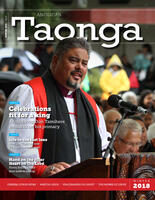

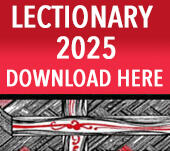








Comments
Log in or create a user account to comment.